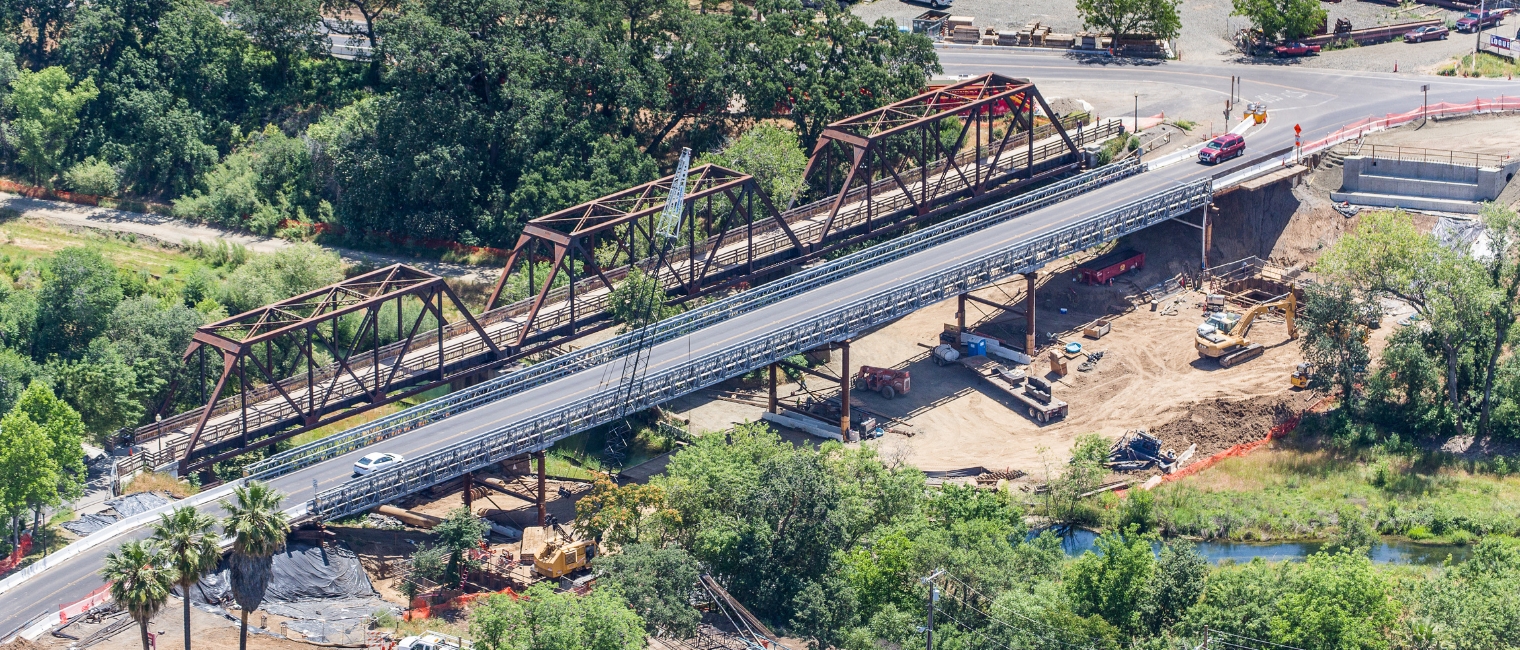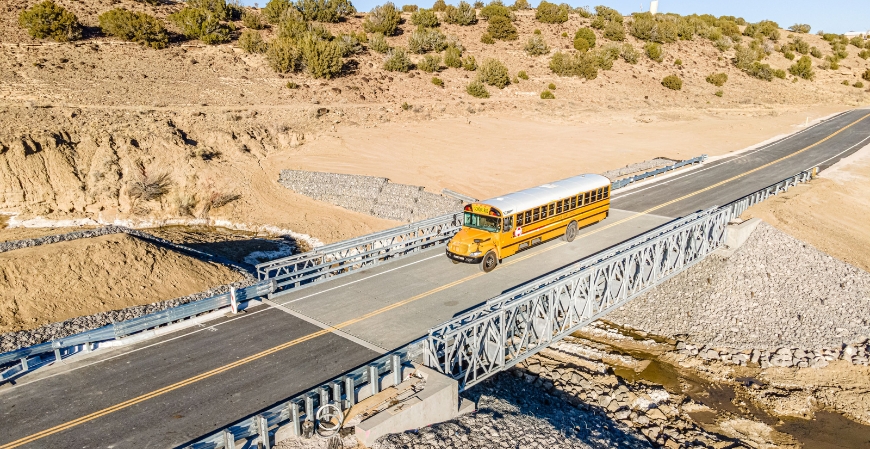
Temporary Acrow bridge ensures undisturbed access for Northern California residents during a three-year project to replace a historic bridge
Originally built in 1908, the Winters Road Bridge arches over the Putah Creek, connecting Yolo and Solano counties. In 2007, this historic bridge received the lowest safety rating among Solano County-owned bridges due to water damage on the exposed timber pilings under the bridge’s pier supports. The damage to the structure’s foundation was determined to be irreparable.
For the past twelve years, environmental studies on the Putah Creek have prohibited the project from starting. Finally, in 2013, workers installed a temporary Acrow structure and began the demolition of the old bridge. While the Acrow bridge provides temporary relief for Northern California residents, a new permanent structure will be constructed to mimic the historic bridge’s most striking architectural feature: the three graceful, concrete arches on its underside. The new bridge, however, will have five arches instead of three because the new design requires more foundational support.
The three-year project was originally estimated to cost $12.2 million, but has since been recalculated to $15.3 million to include sidewalks and approaches to the bridge on both sides. The Federal Highway Bridge Program has provided the required funds.
Disney Construction will oversee the project and chose to use the Acrow 700XS panel bridge. The temporary structure consists of three 80 foot (24.38m) spans and one 120 foot (36.58m) span to create a 360 foot long (109.73m) bridge. It has an HL-93 design load, is 24 feet (7.35m) wide, and has TL-4 type guardrails. It will serve as a temporary bridge for approximately three years while the permanent replacement bridge is built.
Originally Disney construction planned to construct a bridge utilizing an Acrow bridge for only the 120 foot main span, and regular steel beam construction bridge for the three 80 foot spans. After much deliberation, Disney chose to utilize an Acrow bridge for the entire bridge span. The following reasons were cited:
– The bridge would be aesthetically more pleasing to the eye.
– The Acrow Bridge has a great track record with the DOT and would make the design and approval process easier.
– The construction of the temporary bridge would be quicker, thus saving time and money as well as improving the project schedule.
– Utilizing Acrow’s launching capabilities would have a similar effect.









